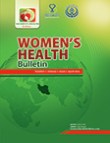Some Determinants of Contraceptive Use Among Women of Reproductive Age Who Have Children with Thalassemia Major in Sistan and Baluchestan Province, Iran
Author(s):
Article Type:
Research/Original Article (دارای رتبه معتبر)
Abstract:
Background
Iran is among the countries located on the thalassemia gene belt. Approximately one-fourth of new thalassemia cases in Iran live in Sistan and Baluchestan Province. The employment of appropriate family planning methods in couples carrying thalassemia gene is one of the major preventive strategies.
Objectives
The present study aimed at examining the determinants of contraceptive use in women of reproductive age who have children with thalassemia major living in Sistan and Baluchestan Province, Iran.
Methods
The current cross sectional study was conducted on 150 women of reproductive age having children with thalassemia major in Sistan and Baluchestan Province. Data were collected from the thalassemia units of three hospitals in Zahedan, Iranshahr, and Chabahar cities from 2017 to 2018. Data collection tool was a researcher-made questionnaire consisted of three parts: the cover letter, items on the socioeconomic status and demographic characteristics, as well as questions about contraception use. SPSS version 20 was employed to analyze data. Pearson chi-square, two-sample t-test, and enter and backward logistic regression were employed to analyze the study data.
Results
Concerning knowledge about contraceptives, 16.4% of respondents were not familiar with any contraception methods. Additionally, 49.3% of the women said that they did not use any contraception methods and about 8% of users did not benefit from safe methods. Results of chi-square/t-tests indicated significant differences between users and nonusers of contraceptives in terms of ethnicity, women’s age, spousal age difference, couple education level, place of residence, polygamy, the desired number of children, distance from health center, and knowledge about contraceptives. Enter and backward logistic regression results also revealed that spousal age difference (odds ratio (OR) = 0.914, P < 0.001), place of residence (OR = 7.68, P < 0.001), and polygamy (OR = 0.127, P < 0.001) were the main predictors of contraceptive use.
Conclusions
Despite Iran’s success in lowering thalassemia births, socioeconomic and cultural factors contribute to the risk of new birth with thalassemia major among couples with minor thalassemia in Sistan and Baluchestan Province.Keywords:
Language:
English
Published:
Women’s Health Bulletin, Volume:6 Issue: 2, Apr 2019
Page:
4
magiran.com/p1976471
دانلود و مطالعه متن این مقاله با یکی از روشهای زیر امکان پذیر است:
اشتراک شخصی
با عضویت و پرداخت آنلاین حق اشتراک یکساله به مبلغ 1,390,000ريال میتوانید 70 عنوان مطلب دانلود کنید!
اشتراک سازمانی
به کتابخانه دانشگاه یا محل کار خود پیشنهاد کنید تا اشتراک سازمانی این پایگاه را برای دسترسی نامحدود همه کاربران به متن مطالب تهیه نمایند!
توجه!
- حق عضویت دریافتی صرف حمایت از نشریات عضو و نگهداری، تکمیل و توسعه مگیران میشود.
- پرداخت حق اشتراک و دانلود مقالات اجازه بازنشر آن در سایر رسانههای چاپی و دیجیتال را به کاربر نمیدهد.
In order to view content subscription is required
Personal subscription
Subscribe magiran.com for 70 € euros via PayPal and download 70 articles during a year.
Organization subscription
Please contact us to subscribe your university or library for unlimited access!


